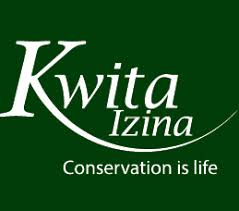A dream for many adventurers and nature lovers is to go gorilla trekking in Rwanda. But timing your visit well can make all the difference in the world, guaranteeing ideal weather, gorilla sightings, and general fun. This is a how-to manual for determining when to go on a gorilla safari in Rwanda:
Seasonal Affairs to Remember:
From June to September and from December to February is known as the dry season.
Rwandan gorilla trekking is sometimes regarded as being best done during the dry season.
Hiking conditions are improved by clear skies and little rain, which also reduces muck and slick paths.
Throughout the dry season, gorillas typically range in more accessible locations, which raises the likelihood of good observations.
Wet season (March through May and October through November):
The rainy season delivers muddy pathways and beautiful green scenery along with fewer people.
Because of the slick conditions and poor visibility in the forest, trekking during the rainy season might be more difficult.
But the rainy season presents the chance to see Rwanda’s breathtaking scenery at its most colorful and lush.
Gorilla Behavior
Breeding Season:
Travelers interested in gorilla trekking should think about coming between June and September, when gorillas are usually reproducing.
Gorillas may be busier at this time of year as males fight for mating spots, offering special chances for photography and observation.
Season of Baby Gorillas:
It might be best to visit between December and February if you’re keen to view the cute baby gorillas.
It’s the time of year when mountain gorillas give birth, so you can see happy babies playing with their families.
Tourist Traffic:
The busiest time of year
The dry seasons of June through September and December through February fall within Rwanda’s peak tourist season.
These months draw more people, which could result in more congested trekking experiences even though they provide ideal weather and gorilla sightings.
During shoulder season:
For the best combination of nice weather and few tourists, think about going in March through May or October through November, the shoulder seasons.
Though rainy weather is possible, travelers may enjoy more private gorilla sightings and quieter hiking routes during these months.
Specific Preferences:
Tolerance to weather:
The ideal time to go gorilla trekking should take into account your tolerance for various weather conditions.
Choose the dry season months if you want bright, dry weather and more steady trekking conditions.
An immersive experience might be provided by the rainy season if you don’t mind the odd downpour and like beautiful scenery.
Availability and Financial Restraints:
Check the gorilla trekking permit availability as they can be few, particularly at the busiest time of year. Think about your budget because different times of the year may mean different costs for lodging and permits.
In conclusion, a number of variables—including personal preferences, tourist traffic, gorilla behavior, and weather—determine when is the optimum time to go gorilla trekking in Rwanda. Rwanda’s mountain gorillas welcome you with their majestic presence and remarkable experiences in the midst of Africa’s wilderness, whether you choose to visit during the dry season for ideal trekking conditions or the wet season for beautiful landscapes and less tourists.

